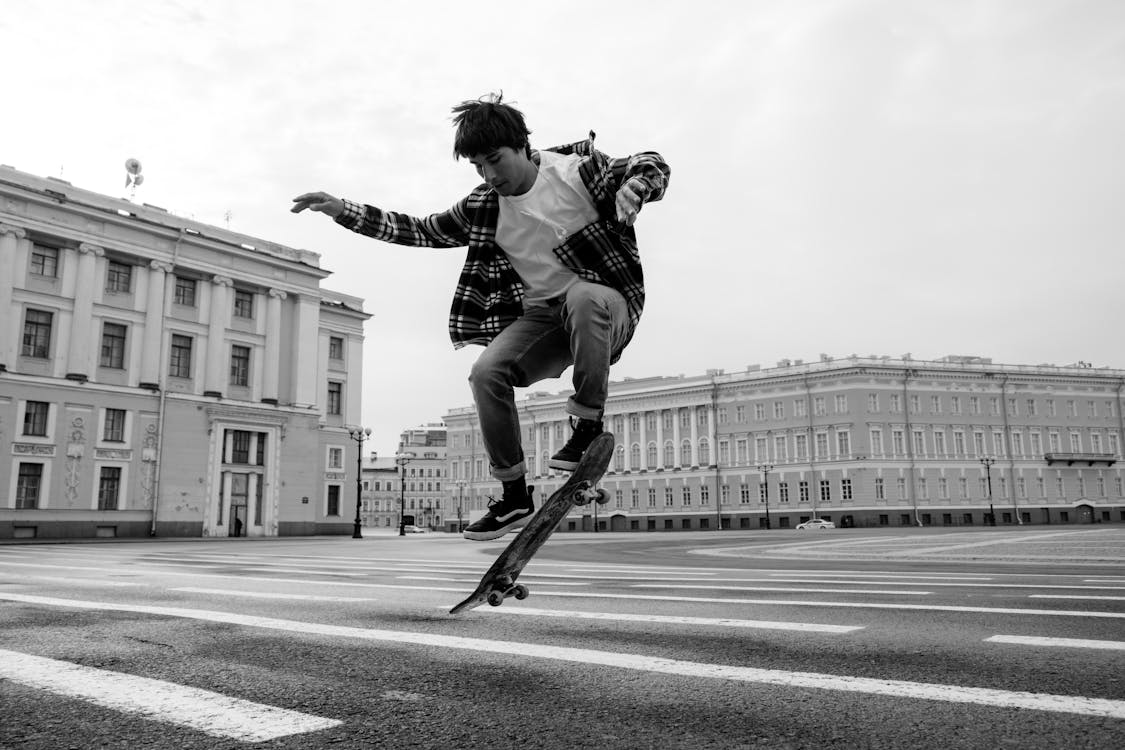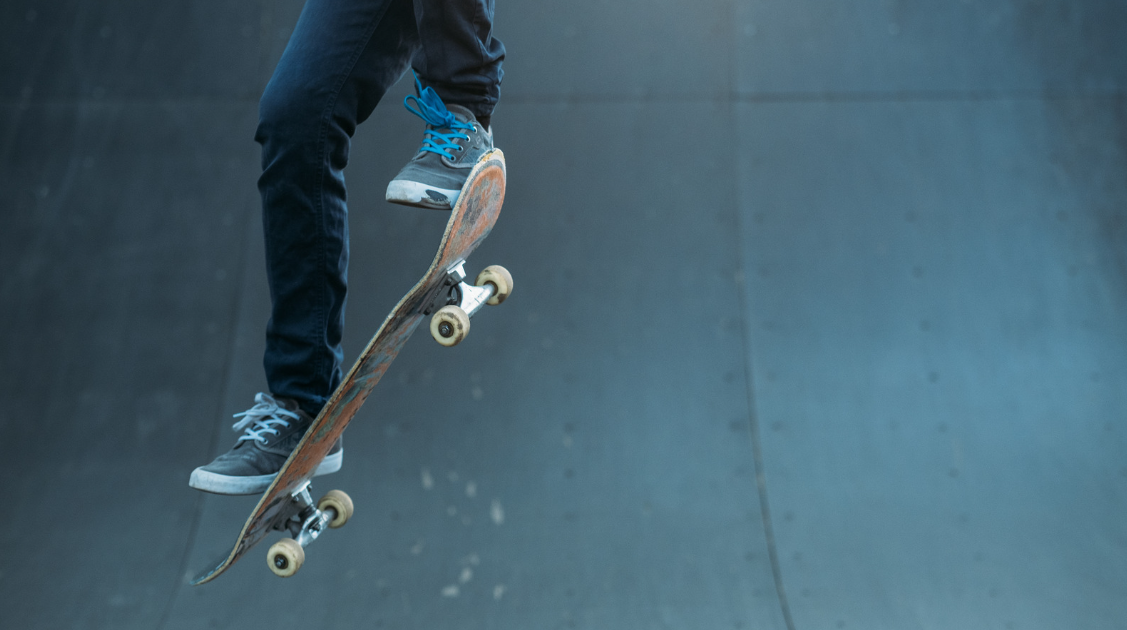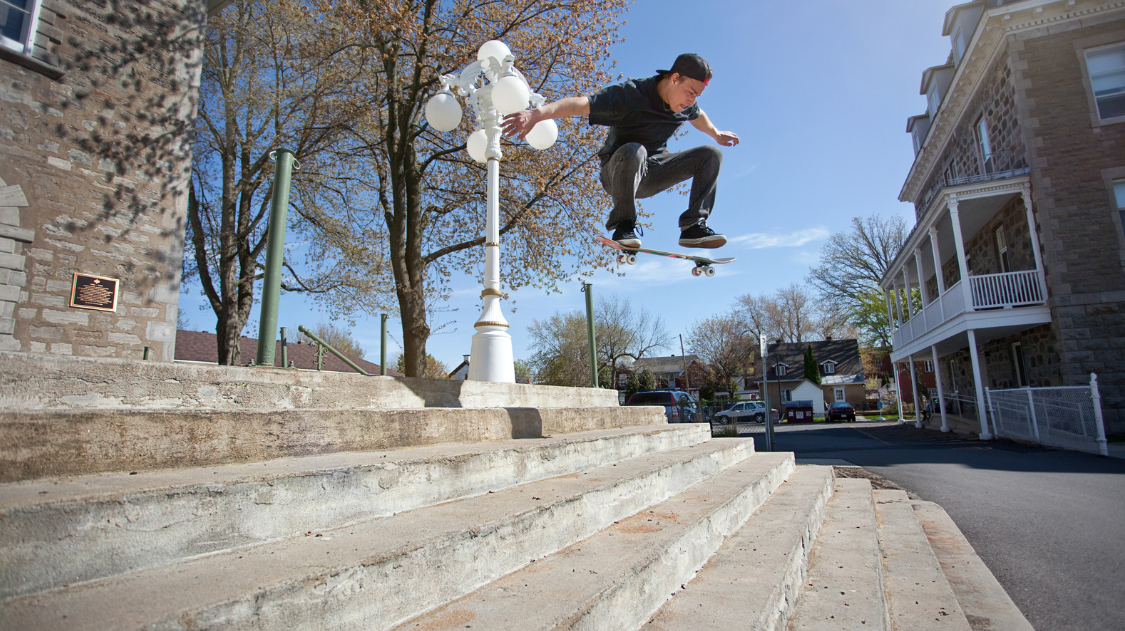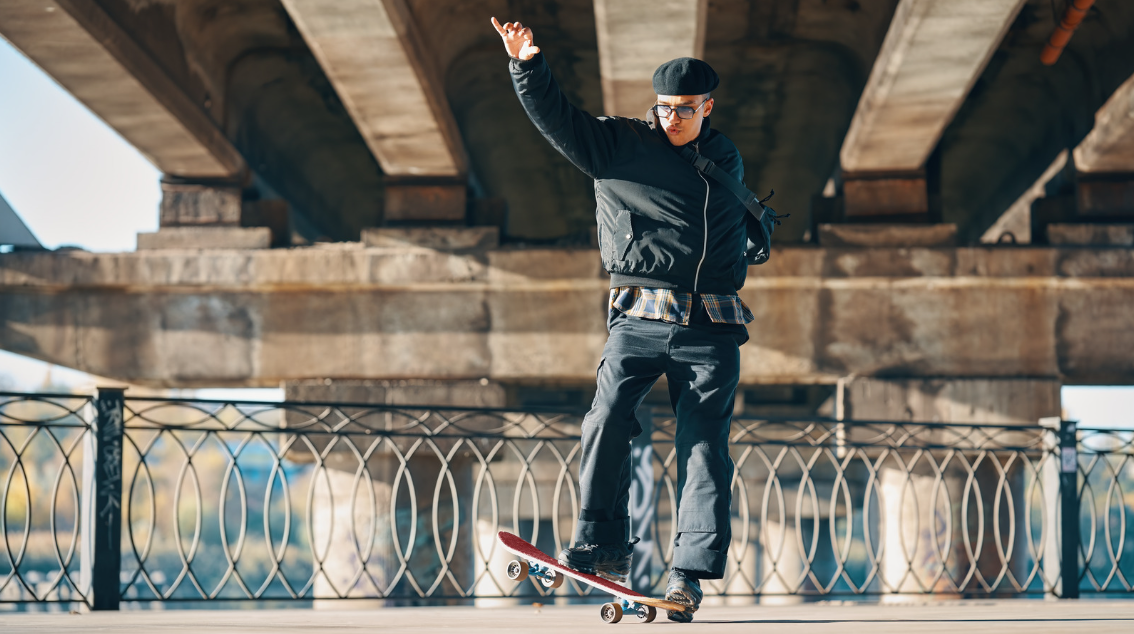Ollie Like a Pro: How to Master Skateboard's Most Essential Trick
Skateboarding is a thrilling and fun activity that has been around for decades. One of the most fundamental tricks in skateboarding is the ollie. It is the foundation of many other tricks, and mastering it is essential for any beginner skater. In this article, we will guide you on how to ollie on a skateboard like a pro.

Before we dive into the steps to master the ollie, it's crucial to understand what it is. An ollie is a trick where the skater jumps with the skateboard, making it levitate in the air.
It is a combination of a jump and a slide, and it's the basis for many other skateboard tricks. With the right foundation, anyone can learn how to ollie on a skateboard.
But, before we get started, it's essential to ensure that you have the proper safety gear. As with any sport, skateboarding can be dangerous, and wearing a helmet is a must.
We recommend wearing elbow and knee pads as well, especially for beginners. Now that we have our safety gear on let's get started on learning how to ollie.
Mastering the Ollie Stance and Movements
The ollie is a fundamental skateboarding trick that serves as the foundation for more advanced maneuvers. While it may seem daunting at first, with practice and patience, you can master the ollie and unlock a world of possibilities on your skateboard.
Proper Foot Placement
The first step to mastering the ollie is ensuring proper foot placement. Your front foot should be positioned just behind the front bolts of the skateboard, with your toes hanging off the edge slightly. This placement allows for maximum control and leverage during the ollie motion.

Your back foot should be placed on the tail of the skateboard, with your toes hanging off the edge as well. This position is crucial for generating the pop that propels the board into the air.
Crouching Position
As you prepare to initiate the ollie, assume a crouched position with your knees bent and your shoulders level. This stance provides a stable base and allows you to spring up explosively when the time comes.
Popping the Board
The key to a successful ollie is in the 'board hits'—that precise moment when you shift your weight onto your back foot and snap the ankle down sharply, causing the tail of the skateboard to strike the ground. This action generates a potent upward force, propelling the board into the air.
Sliding Front Foot Up
Simultaneously with popping the board, engage in the ollie motion by sliding your front foot up towards the nose of the skateboard. This motion levels out the board and prevents it from flipping over. Aim to keep your front foot centered over the back edge of the board for optimal balance.
Jumping into the Air
As the board is rolling slowly rises, extend your legs and jump into the air. Bring your back leg up to meet your front leg, ensuring that both are fully extended. This motion helps to stabilize the board and maintain balance in the air.

Landing Smoothly
When preparing to land, bend your ankles to absorb the impact and maintain control. Aim to land with both feet evenly distributed over the board.
Practice and Patience
Learning to ollie takes time and practice. Don't get discouraged if you don't land it perfectly the first few times. Keep practicing the individual motions and experiment with different techniques to find what works best for you.
Most importantly, have fun and enjoy the process of learning this essential skateboarding trick.
For more information on mastering the ollie, please watch this great video by Dan Webz:
Taking the Ollie to the Streets
Now that we've mastered the basic ollie, it's time to take it to the streets. Street skateboarding is all about using your environment to your advantage, and the ollie is the foundation of almost every trick you'll learn.
To ollie over an obstacle, start by approaching it at a comfortable speed. As you get close, pop the tail of your board down and jump up with your front foot. This will send the board into the air, allowing you to clear the obstacle. Make sure to keep your knees bent and your weight centered over the board to maintain balance.

Timing is key when it comes to ollieing over obstacles. You want to pop the board just as you reach the obstacle, so you have enough height to clear it. It can take some practice to get the timing right, but with enough repetition, you'll start to get a feel for it.
As you progress, ensure to keep your shoulders straight to maintain balance. You can start adding in other elements to your ollies, like spinning or sliding. To spin, twist your shoulders and hips in the direction you want to turn while maintaining a straight posture.
To slide, drag your front foot up the board as you jump, causing the board to slide along the ground, again remembering to keep your shoulders straight for control.
One of the keys to ollieing higher is to use your knees. As you jump, tuck your knees up towards your chest to generate more height. You can also use your arms to help generate momentum.
If you're having trouble getting enough height, try practicing on grass or carpet. This will give you more leverage to pop the board up into the air. You can also try riding faster to generate more speed and momentum.
Remember, the ollie is the foundation of almost every trick in skateboarding, so mastering it is essential to progressing to more advanced flip tricks and rail tricks. Keep practicing and pushing yourself to new heights, and you'll be amazed at what you can accomplish.
Practicing and Perfecting Your Ollie
Now that we've covered the basics of the ollie, it's time to start practicing and perfecting it. Here are some tips and techniques to help you improve your ollie:
-
Start on grass or carpet: Practicing on a soft surface can help reduce the impact on your ankles and knees while you're learning. Once you feel more confident, you can move on to concrete or asphalt.
-
Focus on timing and momentum: The key to a successful ollie is timing and momentum. As you crouch down, start to shift your weight towards your back foot. Then, as you jump, slide your front foot up towards the nose of the board while simultaneously dragging your back foot up the grip tape.

-
Level out in the air: To achieve greater height and distance, it's crucial to level out your skateboard mid-air. Accomplish this by elevating your back foot a touch more than the front, ensuring a dragging motion toward the board's tail. Pay close attention to the "tail hits," as this technique is pivotal for a balanced aerial maneuver.
-
Build confidence: Don't be afraid to fall or mess up. The more you practice, the more comfortable you'll become on your board. Start small and work your way up to higher ollies.
-
Work on your balance: As you jump, make it a point to stay centered over the board. Doing so will help you achieve more consistent landings and maintain better control.
-
Bend your knees: Crouching down before you jump can help you generate more power and lift. Make sure to keep your shoulders over your knees and your knees over your toes.
-
Wear safety gear: Always wear a helmet, knee pads, and elbow pads when practicing ollies. This will help protect you from injury in case of a fall.
Remember, the ollie is the foundation for many other tricks like kickflips and heelflips. By mastering this basic skill, you'll be well on your way to becoming a confident and skilled rider. So get out there and start practicing higher ollie!
Frequently Asked Questions
What's the easiest skateboard trick to learn?
If you're just starting out, we recommend putting your best foot forward by learning how to ride and balance on your skateboard before attempting any tricks. Once you're comfortable with the basics, the easiest and first trick move to learn is the "ollie," which is the foundation for many other tricks.
How long does it take to learn the ollie?
Learning the ollie can take anywhere from a few days to several weeks or even months. It all depends on your dedication and practice. Don't get discouraged if you don't get it right away - keep practicing and you'll get there!
Why can't I seem to do an ollie?
Make sure your foot placement is correct by positioning your front foot slightly behind the board's front bolts, which can significantly affect your timing and technique.
Who invented the ollie?
The ollie, a fundamental maneuver in skateboarding, was invented by Alan "Ollie" Gelfand in the late 1970s. He discovered that by slamming his back foot down on the tail of his skateboard while jumping, he could make the board pop up into the air.
How can I improve my ollie?
Practice is key when it comes to improving your ollie. Make sure you're using the proper technique, such as sliding your front foot forward and up the board and jumping at the right time. You can also try practicing on different surfaces or obstacles to challenge yourself.
What are some common mistakes when learning the ollie?
Some common mistakes when learning the ollie include not popping the board hard enough to reach its highest point, not sliding your front foot up the board, and not jumping at the right time. Make sure you're following the proper steps and keep practicing to avoid these mistakes.
